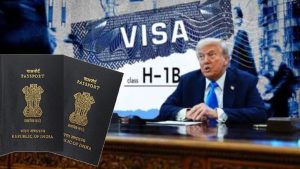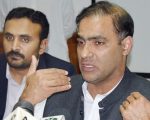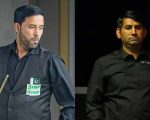“There was great concern in the halls of power in America that this most honored of black Americans [Martin Luther King Jr.] had decided to use the full force of his integrity, moral authority, and international prestige to challenge the might and moral bankruptcy of the American state, which he freely characterized as the “greatest purveyor of violence on earth.” – Dr. William F. Pepper Esq.
“To understand his [King’s] death, it is essential to realize that although he is popularly depicted as a civil rights leader, he was much more than that. A nonviolent revolutionary, he personified the most powerful force for the long overdue social, political, and economic reconstruction of the nation.” – Dr. William F. Pepper Esq.
Four assassinations in a span of five years in the 1960s, have enabled corporate America and its real arm and fist, the CIA, to consolidate their evil grip comprehensively and permanently over American society. The resulting aggravation of inequality in wealth in the U.S. has currently acquired unprecedented levels. In parallel with this the trend towards curtailment of freedoms, the erosion of the U.S. constitution, and “perpetual war for perpetual peace” have made the U.S. a surveillance state and a debt-ridden society. The debt-bondage to which the U.S. is now subject, is of such a level that freedom from it is inconceivable.
The assassinations began with the assassination of John F. Kennedy (JFK) on December 22, 1963, followed by Malcolm X (February 21, 1965), Martin Luther King Jr. (April 4, 1968) and finally Robert F. Kennedy on June 6, 1968. Martin Luther King Jr. was a Nobel laureate having won the1964 Nobel Peace Prize for “combating racial inequality through non-violent resistance”.
One of the most important reasons for the assassination of JFK was his decision to withdraw from the Vietnam war. His overall thrust towards a peaceful and egalitarian world by establishing good relations with Soviet Russia, and for black civil rights, were utterly unacceptable for the Malthusian and racist American Establishment. Those who thrive on wars – the military industry, the oil industry, construction companies and, above all, the multi-national banks that provide loans to all the aforementioned sectors, and to the government, could not afford a peaceful world. The U.S. mainstream media (MSM) has played a dirty role in this game of subverting America – it has been a mere propaganda arm of the aforementioned forces.
Of the four men assassinated, two were black religious leaders, one Christian and one Muslim, and two were brothers of Catholic Irish origin. The assassination of black leaders pushed the struggle of the black people for equality by decades, by depriving them of their ablest and most vocal leaders. The blacks, much to the satisfaction of the U.S. Establishment, are still in the wilderness and are leaderless. Like JFK, Martin Luther King (MLK) was also assassinated because he had come out against the Vietnam war and, had announced a march on Washington D.C., with the intent of laying siege to the Congress so that it may end poverty (Poor Peoples Campaign). Ending poverty meant redistribution of American wealth. The NCNP (National Congress for New Politics) had planned to field him as a third party presidential candidate in the U.S. presidential elections! How could that be allowed!
Those who had killed JFK to launch the Vietnam war could not afford a man of MLK’s stature attempting to force them to stop the war. Nor would they permit the march on Washington D.C. because no force could control the huge mass of men and women that was expected to turn up. The “solution” was to kill MLK just as they had killed JFK. And to cover up the murder with the help of a conscienceless media. Just as in the JFK assassination, Lee Harvey Oswald was a patsy who did not kill JFK, James Earl Ray, a petty criminal, was held responsible for the murder of MLK, a murder that he did not commit.
Within a month of the JFK assassination the FBI officials met in Washington to discuss ways of “neutralizing King as an effective Negro leader.” The meeting concentrated on how “to produce the best results without embarrassment to the Bureau.” One may ask as to what was the problem the FBI had with Dr. King being an effective leader? He believed in and practiced non-violence. So what troubled the FBI about Dr. King? The only thing that comes to mind is that the FBI leadership was determined to keep the black community backward, poor and ineffective. The FBI leadership was, without any doubt, a racist leadership. One may note that at that time Dr. King was not yet a Nobel laureate.
At the aforementioned FBI meeting “Officials agreed that hidden microphones be placed in Dr. King’s hotel rooms as he traveled in an effort to pick up evidence of extra-marital sexual activity that could be used to tarnish his reputation or even blackmail him.” From then on, till the end of 1965 numerous hotel rooms where Dr. King stayed were bugged bit without success. The bugging was discontinued on the orders of the FBI Director J. Edgar Hoover in 1966 when he became apprehensive of a Congressional inquiry.
It was not just the FBI that had an interest in chaining Dr. King. The CIA was not to be left out of such activity. The CIA’s office of Security (OS) had been keeping an eye on Dr. King. Some of the key OS personnel were former FBI agents and the OS had a close relationship with J. Edgar Hoover. Like the FBI, OS was in search of information that could be used to discredit Dr. King. OS intercepted Dr. King’s mail and also entered his hotel rooms illegally “to obtain photocopies of credit card receipts, business cards, and phone messages.” The CIA suspected Dr. King of being influenced by a “Peking [Beijing] line” of communist thinking. One is a bit surprised at such poor assessments by the agencies.
Dr. King was shot dead in the balcony of his motel (Lorraine Motel) room in Memphis, Tennessee, around 6:00 p.m. on April 4, 1968. Dr. King had arrived on April 3 in Memphis, to lead a peaceful march organized by the SCLC (Southern Christian Leadership Conference) on April 5. He had, in a sense, been forced to come to Memphis where violence had broken out on March 28, moments after Dr. King had joined the sanitation workers march. Coretta Scott King, the wife of Dr. King testified that the violence had been provoked by government provocateurs. Dr. King was blamed for the violence. He therefore returned to Memphis to prepare for a truly non-violent march, in order to prove that the SCLC could do it and therefore could carry out a non-violent march on Washington in the spring of 1968.
Since an assassination had been planned, several things were done to make it easy for the assassin to kill Dr. King. Firstly, instead of the usual unit of black officers assigned to the security detail of Dr. King, a detail comprising only of white officers, who were not familiar with Dr. King, and vice versa, were sent to receive him at the airport. Secondly the manager of the motel had intended to place Dr. King in room 202 which was a secure secluded room. Someone from SCLC called him and insisted that Dr. King be moved to room 306 which was exposed and a security hazard. The manager only reluctantly agreed to do so. Thirdly, two black firemen posted at Fire Station number 2 right next to the Lorraine motel, were transferred on April 3. On April 4 a black detective posted at Fire Station 2 was asked to leave.
Fireman Floyd E. Newsum was transferred to Fire Station 31 where his services were not needed whereas no replacement was sent to Fire Station 2. Similarly, fireman Norvell E. Wallace was transferred to a fire station far from Lorraine Motel. There was no satisfactory reason given for his temporary transfer. It was much later determined that the firemen had been transferred on the request of the Memphis Police Department (MPD). On April 4, the assassination day, the MPD, for some reason, wanted the Fire Station number 2 to be without officers who were concerned about the security of Dr. King. Further, four tactical police units patrolling the area were withdrawn. When author Philip Melanson asked MPD inspector Sam Evans the reason, since it made the escape of the assassin easier, he replied he did so on the request Rev. Samuel Kyles connected with Dr. King. Rev. Kyles vehemently denied making such a request.
Further, on April 4, Fire Station 2 was also deprived of the services of a black detective Ed Redditt of MPD who was posted there. Redditt noticed that there was no one with Dr. King so, he on his own asked the Fire Station 2 if he could observe Dr. King from there, to be which they agreed. However, in the afternoon of April 4 MPD intelligence officer Eli Arkin came to Fire Station 2 and took Redditt to Central Headquarters. There, against his wishes, Redditt was ordered to go home accompanied by Arkin!
It is important to note that the area with a clump of bushes, from where Dr. King was shot, was adjacent to Fire Station 2. Apart from depriving Dr. King of black firemen and an officer at Fire Station 2, there was another sinister reason for “clearing” Fire Station 2 of blacks. Carthel Weeden, captain of Fire Station 2, testified in 1968 that two U.S. Army officer came to him on the morning of April 4. They wanted a location in Fire Station 2 from where they could look out on Motel Lorraine. Why? Weeden took them to the roof of the Fire Station from where they could have a bird’s eye view, not just of Dr. King’s balcony and doorway, but also could easily look down upon the brushy area adjacent to the Fire Station. The brushy area was the area where the sniper could hide and shoot Dr. King if he came out on the balcony.
The Army officers who approached Captain Weeden were carrying bags, and, according to his testimony, indicated to him that they were carrying cameras. In his important book The Phoenix Program (in the Phoenix Program the CIA employed the most horrendous torture techniques in an attempt to destroy Viet Cong), author Douglas Valentine mentions (p 338) “[T]he 111th Military Intelligence Group (MIG) kept Dr. Martin Luther King Jr., under twenty-four-hour-a-day surveillance and reportedly watched and took photos, while King’s assassin took position, took aim, fired and walked away.” The source of Valentine’s information were former intelligence operatives, whom he names, and who had subsequently turned against the Vietnam War and joined VVAW (Vietnam Veterans Against the War). Such former intelligence operatives who had broken ranks were targeted under an Army intelligence operation called Operation Shamrock. This means that there was a conspiracy of which the MIG was aware – it was not a random gunman acting on his own, as propagated in the media and as falsely argued by the State.
A very important piece of information has been provided by author James Douglass in an article in the book The Assassinations (editors James DiEugenio and Lisa Pease). He refers to a videotaped testimony of a CIA whistleblower named Jack Terrell who was dying of cancer. Terrell revealed that his friend J.D. Hill had admitted to him to being a member of an Army sniper team that had been assigned the task of shooting “an unknown target” in Memphis on April 4, 1968. After having trained for triangular shooting three teams were on their way to take up positions on a water tower and two buildings when the mission was called off. J.D. Hill told Terrell that when he learned of Dr. King’s assassination the next day he realized that the teams were being sent as a contingency in case the shooter failed to kill Dr. King. One of the jurors in the case, David Morphy, described the testimony as “awesome.”
So the assassination of Dr. King was not so simple as the State and the media make it out to be. Without any doubt, powerful and deep forces were involved. In fact, Walter Fauntroy, a member of the Congress for twenty years, who chaired the subcommittee of the HSCA (House Select Committee on Assassinations) dealing with the assassination of Dr. King, testified in court in Memphis that “it was apparent that we were dealing with very sophisticated forces.” Reporter Steve Tompkins had published a story on army intelligence infiltration of black organizations and civil rights groups in March 1993. He had also mentioned that for three decades the army intelligence had carried out surveillance of Dr. King and his family.
Through Tompkins, William Pepper, the lawyer who had pursued the King assassination case for 25 years then, was able to make contact with two members of the team to which J.D. Hill had belonged. They corroborated each other even though Tompkins met them separately, in different countries. What they said corroborated Terrell’s testimony. They revealed that they were part of an army hit team sent to Memphis to take out Dr. King and Andrew Young. They met Tomkins outside the U.S. because they were of the view that a “cleanup” operation might be taking place and they felt their lives were in danger. In view of the threat to their lives Dr. Pepper did not use their original names in his book, An Act of State: The Execution of Martin Luther King. Thus an army intelligence team was indeed sent to kill Dr. King and other black leaders.
How did James Earl Ray get declared as the assassin of Dr. King? James Earl Ray had been doing errands for a man named Raul. He used to carry deliveries for him from one part of the U.S, to the other or to and from Canada. For these deliveries Raul used to pay him a good amount. These activities were mostly gunrunning operations and it appears that Raul may have worked for the mafia. And there appears to be an involvement of some army individuals who used to steal guns from army stores and pass them on to Raul who would then sell them and the money was divided.
During their movements Raul, on one occasion, when they were in Atlanta, asked him to buy a large bore deer rifle fitted with a scope. Ray felt that since he had an Alabama ID it would be better to buy it in Alabama. So he bought the rifle from Birmingham Alabama, from a store suggested by Raul. He told them that his brother in law wanted to go deer hunting. Apparently Raul did not like what Ray had bought. However, Ray had picked up a brochure from the gun store and showed it to Raul, who marked the rifle he wanted. So Ray phoned the store informing them that his brother in law wanted a different rifle and asking them if he could exchange it. The next morning, March 30, 1968, Ray picked up the rifle desired by Raul – it is what is called a Remington 760 Gamemaster. Before they separated Raul told Ray to be in Memphis on April 3 at a certain motel and to bring the gun with him. Lawyer William Pepper, by questioning Ray, discovered the important fact Ray had very little knowledge of guns.
Raul had instructed Ray to meet him at Jim’s Grill on April 4. The next day i.e. April 4, the two met and Raul asked him to give him the gun. Ray took the gun from the car to his room and gave it to Raul. Ray’s last meeting with Raul was at about 5:20 p.m. on April 4. Raul told him that he was going to meet an important gun runner, telling him that he would be back in a few hours. Raul gave him $200 asking him to go to the movies in the meantime. Ray owned a white Mustang and Raul asked him to leave it in case he (i.e. Raul) needed to use it. The car had a flat spare tire, so just before 6:00 p.m., he took it to a garage for the needful. The garage was busy. While he was waiting he saw an ambulance race past with its siren blaring.
Driving back Ray was confronted by a policeman who asked him to turn around as the street to his motel had been blocked. Sensing something wrong Ray decided to leave the city and go to Mississippi. Enroute he heard on the radio that Dr. King had been killed and that the police was looking for a white Mustang. It was then that he realized that he might have been involved or framed in the killing. He moved from place to place under various aliases escaping to England and from there to Portugal in an attempt to get to one of the Portuguese territories like Mozambique or Angola. Unsuccessful, he returned to England where he was apprehended on June 8 and then extradited to the U.S. on July 19, 1968.
Dr. William Pepper writes in his book The Plot to Kill King: “We asked Ray why he had pleaded guilty. He insisted that he had been greatly pressured and coerced. I would later learn the details of the extent of the pressure on him and the history of his extraordinary legal representation that even involved the lawyer paying him to take a plea.” It is important to point out that in proceeding against Ray the state had always insisted that Raul did not exist. Dr. Pepper was accompanied by Dr. Berens in the aforementioned session with Ray. They concluded: “As for the extensive details that Ray provided convinced us that such a person did exist despite the authorities’ consistent public statements to the contrary.” In early 1978 someone had anonymously sent a picture of a man to Ray’s brother which Ray identified as Raul. Thus a picture of Raul was available.
The state had argued that James Earl Ray was a racist with a hatred of blacks and that is what led him to murder Dr. King. Dr. Pepper writes: “The session left me intrigued and troubled. The James earl Ray I had read and heard about was not the man I saw in that tiny room. The man I saw was not a nut, nor was he a flaming racist. In fact, there was gentleness about him that I didn’t think could have been feigned. Could an innocent man have spent nearly nine years in prison with the truth never having been revealed? I decided to continue my investigation.”
An important witness to some key events of April 4 was Betty Spates. She was the girlfriend of Loyd Jowers the owner of Jim’s Grill. Jowers was married but still he kept Betty. In three sessions lasting thirteen hours, Betty told Dr. Pepper that around noontime on April 4, Loyd was not around which disturbed her because she felt he might be cheating on her. After a short time Jowers turned up with a light brown rifle in his hand, and, after a brief conversation with her, proceeded to break it her presence. He then went to drop the broken rifle in the boot of his car – she could see him from the window.
Betty returned to the Grill around 6:00 p.m. Loyd was nowhere in sight. She went towards the kitchen noticing that the door between the restaurant and the kitchen was tightly closed. This was unusual. So she proceeded to open the kitchen door and then saw that door leading to the backyard was wide open. Soon she heard some sound like that of a firecracker. As she looked out she noticed Jowers rushing from the brush area carrying another rifle. “He was out of breath and white as a ghost.” His hair was in disarray and the knees of his trousers were wet and muddy as if he had been kneeling in the soggy grass or brush area.” She recalled that the rifle had “a dark mahogany brown stock, a scope and a short barrel that made the gun look like a toy.” Jowers asked her “You wouldn’t do anything to hurt me, Betty replied that she would not. So on April 4, Jowers broke two rifles in the presence of Betty – one shortly after noon time and the other soon after Dr. King was shot.
Not only were there two guns there were two white Mustangs, one belonging to Ray, parked not far from each other in the parking area. There were witnesses to what had happened, some of whom were never even contacted by the law enforcement. They saw smoke coming out the bushes across Lorraine adjacent to Fire Station 2. One witness, a woman, saw a man run from behind the bushes after the shot was fired and jump into a green car and speed away. The police just let him get away by blocking the end opposite to the direction in which he was speeding away. On the very next morning the bushes were cut down! Maynard Stiles, a senior officer of the Memphis Sanitation Department said that he received a call from Inspector Sam Evan of the MPD “requesting assistance in clearing brush and debris from a vacant lot in the vicinity of the assassination.” Stiles identified the lot from where bushes were cleared – it was the same lot from where Dr. King had been shot. The bushes were no longer there the next morning!
In 1993, partly as a result of Pepper’s efforts, and partly out of a sense of penitence (he had grown quite old) Jowers went public in Prime Time Live to confess his role in the King murder. He admitted that he had received, through courier, $100,000 from a mafia-connected man named Frank Liberto. Liberto had asked him to hold the money for a man named Raul. Jowers stated that he was visited on April 3 by Raul who brought a rifle in a box. In a taped testimony in 1998 Jowers said that planning of Dr. King’s assassination took place in meeting at his Jim’s Grill and involved an undercover MPD officer Merrell McCullough (who was later found to be working for the CIA), MPD Lt. Earl Clark, another MPD officer and two other men whom he did not know but thought that they were Federal agents. Jowers said that he did not see who shot Dr. King but he received a smoking gun from MPD’s Earl Clark, which he broke and which was collected the next day by Raul. He thought that it was Earl Clark who shot Dr. King because Clark was MPD’s best marksman.
The testimony and confessions of Jowers established that James Earl Ray was innocent and had been wrongly convicted. He also confirmed the existence of Raul, something that the state has always denied. In fact, Pepper was able to trace Raul and find out where he lived in the U.S. In order to implicate Ray a package containing the gun Ray had bought, along with a radio set, was left by a man at the doorway of a man named Guy Canipe. On closer scrutiny it turned out, as pointed out by Judge Hanes to the jury, that the package had been dropped (emphasis in original) “about ten minutes before the shot was fired.” Three judges, including judge Hanes, who were familiar with the case, became witnesses and testified that the bullet taken from Dr. King’s body did not come from the gun that Ray had bought.
Dr. Pepper had been pursuing the case of clearing Ray in a criminal court. There were, by now numerous very convincing and credible witnesses, whose testimony cannot be mentioned in a brief article. Apart from ordering tests to determine whether the bullet that killed Dr. King came from Ray’s gun, judge Joe Brown, overruling objections by the state, had allowed members to make statements before the court. The state then filed a motion asking for the transfer of the case from judge Joe Brown. The Appeals Court eventually determined that Judge Joe Brown had the authority to hear the case but then also added a caveat – the expenses for testing (approximately $30,000) will not be paid by the state! That practically meant that the case in the criminal court would not proceed further. The state had managed to stall the case after almost thirty years of the assassination! They protected Raul who, according to witnesses, had himself told them that he had killed King.
It is also important to point out that Dr. King did not die but was alive when he was brought to hospital. He had been hit on his face by the bullet. At the hospital numerous military intelligence personnel, who knew the names of all emergency room nurses and doctors, appeared from nowhere. The doctors decided to take King to surgery but, at that moment, head of surgery Dr. Breen Bland turned up with a couple of men in suits and shouted at the staff: “Stop working on the nigger and let him die. Now all of you get out of here, right now. Everybody get out.” He remained there himself with two men in suits. And that is how Dr. King, a Nobel Laureate, a man of non-violence, a man who stood for the poor and downtrodden, a most distinguished man, died. “I can’t believe they took his life” said Lula Mae Shelby to her family the next day – she worked at the hospital and was present when they let King die in the hospital by not treating him.
Finally, Pepper and the King family filed a civil case for the acquittal of James Earl Ray who was suffering from liver cirrhosis and was on death bed. In a hearing that lasted about four weeks and in which 70 witnesses were heard by the jury, the judge asked the jury to determine: a) whether Loyd Jowers participated in a conspiracy to harm Dr. King and b) Did you also find that others including government agencies were parties to this conspiracy as alleged by the defendant. It took the jury about an hour to arrive at a unanimous verdict. Based on the evidence the judge then apportioned liability as follows: 30 percent – defendant Jowers, 70% – all other co-conspirators! James Earl Ray was therefore not guilty but died, without hearing the verdict, on April 23, 1998, after about three decades of unjust confinement. Such is the cruelty of a state which murders its eminent citizen and frames an innocent person.
Dr. Pepper writes: “For a period of about 12 hours, there was a window of factual coverage,” The verdict was reported, however irregularly, around the world.” And then what happened? Within 24 hours, the mighty Wurlitzer of the powerful private and public interests involved was in full volume. Analytical pieces suddenly appeared criticizing the judge, the defense counsel, and the jury. The trial was diminished in importance, and journalists blandly asserted that nothing had changed.” None of these journalists had attended the court proceedings and yet were provided opportunity to write nationally syndicated columns and to appear on TV programs! “Presstitutes” is a most apt characterization by the upright Paul Craig Roberts.














